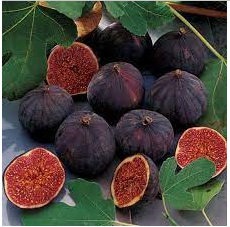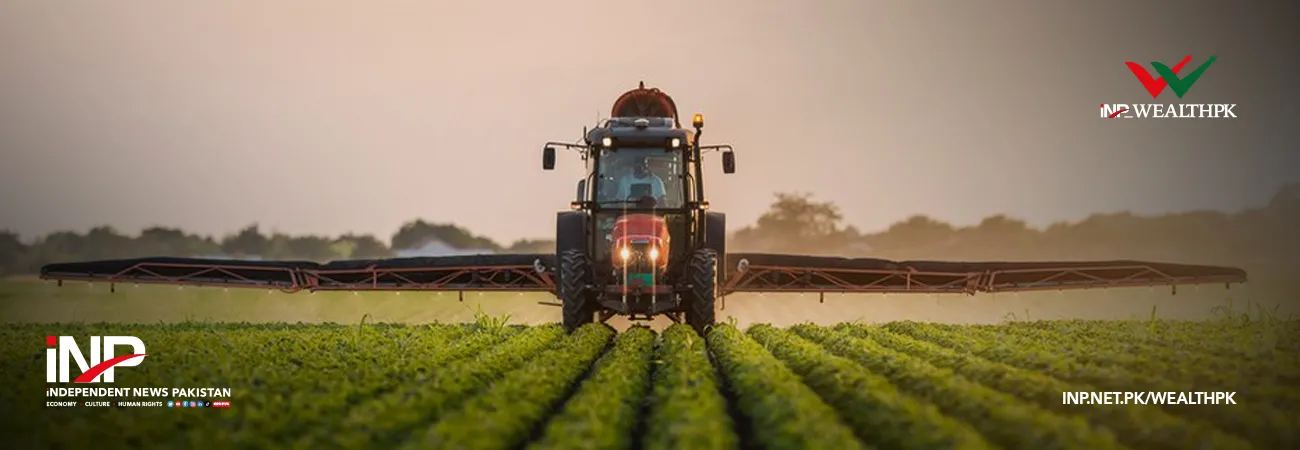آئی این پی ویلتھ پی کے
Azeem Ahmed Khan
Pakistan, blessed with prime soil and a climate tailor-made for figs, still relies on imports for 99.9% of its dried figs, shipping millions in foreign exchange abroad. Imagine turning the country’s orchards into fig powerhouses: boosting farmers’ incomes, revitalising rural economies, and slashing import bills, all with a fruit that’s already rooted in the country’s heritage.

“Figs are a superfood with immense nutritional and economic value,” Abdul Raqeeb Awan, owner of Ameer Farms, Chakwal, told WealthPK. “With government support and proper awareness, Pakistan can drastically cut its fig imports and become self-reliant, while boosting local employment and agricultural income.”
Despite being one of the oldest fruits in the world and a highly nutritious “fruit of life,” figs are grown on merely 400 acres across Pakistan, he pointed out. With a potential average yield of eight tons per acre, the country’s total production stands at around 3,200 tons, nowhere near meeting domestic demand, he added.
“As a result, Pakistan relies heavily on fig imports from countries such as Turkey, Iran, and Afghanistan,” he said. Figs are also produced in Egypt, Algeria, and Morocco. At Ameer Farms, one of the few places in Pakistan with a commercial fig orchard, a successful fig-growing model has emerged. Awan attributes the initiative to his father, Ameer Muhammad Akram Awan.
“This farm is cultivated on prime limestone soil and fertile land with water access,” he said. “My father saw the potential and collaborated with the Barani Agricultural Research Institute, Chakwal to plant pure breeds, mostly of Iranian and Afghan origin.” Initially, his father faced challenges in shifting from wheat farming to figs, but with time, the orchard flourished, Awan said. The farm spans five acres and employs drip irrigation to conserve water.
The farm also offers agritourism opportunities by letting visitors pluck and eat fresh figs for a small entry fee. “It creates awareness and adds value to the experience,” he said. Awan has urged farmers to carefully assess the challenges before opting for fig cultivation, noting that the fruit has a short harvesting duration and a limited shelf life of just two to three days. He warned that managing the crop in its initial stages could prove difficult for growers unfamiliar with its handling requirements.
Commercially, without proper cold chain infrastructure, transporting fresh figs remains a costly challenge, making it unfeasible for most farmers. Turkey exports fresh figs by air, he pointed out. There are many ways to consume figs, all of them are very good, but one should eat it fresh because it has a unique taste and its pulp is also different from other fruits, Awan said. Discussing the health benefits of figs, he said that figs are a superfood known for boosting immunity.

The on-ground operations of Ameer Farms are managed by Shaheedullah Awan, who informed WealthPK that the Potohar and Vanhar regions of Chakwal are native to figs and are climatically ideal for their cultivation. “Figs grow wild in Pakistan’s forests, but if these had been pruned and cultivated properly, they could also yield commercial-grade fruit,” he said.
Shaheedullah shared that two commercial varieties, Kabuli and Irani, are currently grown at Ameer Farms. “Each acre holds around 200 fig plants. A mature plant can yield up to 400 kilogrammes figs, depending on its age and pruning,” he added.
However, maintaining quality requires careful management. “If over-pushed, the quantity of figs increases but quality declines.” “This farm adopts a high-volume, low-cost model,” said Shaheedullah. However, figs' perishable nature makes logistics difficult unless packed individually in coolers or ice boxes.”
Despite the economic viability, fig cultivation remains largely unexplored. “Pakistan is an agrarian economy. With small landholdings, farmers can still earn well by growing figs, which require moderate water and can be managed with drip irrigation,” Shaheedullah suggested. The farm uses solar-powered wells to overcome water supply issues.
He pointed out that while fig trees can produce two crops a year, Ameer Farms currently harvests once annually to ensure plant health and longevity. “Pruning is done in December, and new plants are propagated by January,” he explained.
In addition to farming, the farm engages in online sales, festival marketing, and store partnerships under its own branding. Yet, the lack of awareness, inadequate exposure, and absence of market infrastructure hinder large-scale fig farming in Pakistan, he added.
Credit: INP-WealthPk











